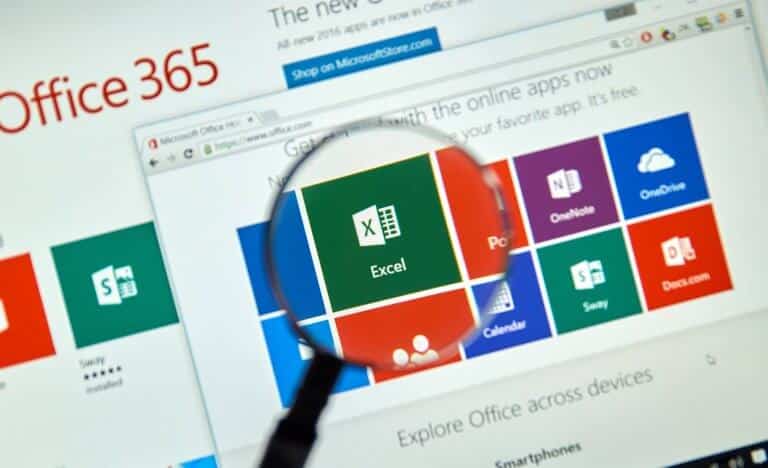QR codes are an agile, dynamic and creative means of communication that open up new possibilities of interaction for companies, offering the possibility of reaching different target audiences in just a few minutes.
The constant evolution of Information and Communication Technologies translates into new and more efficient tools to optimize the competitiveness of companies, especially in daily interaction with their target audiences.
This characteristic is expressed in multiple strategic areas such as, for example, the use of digital channels for sales and post-sales; the massification of communication in real time through social networks; and the deployment of personalized advertising campaigns for mobile device users, among various other available options.
One of the tools that has gained a great presence in this transformative field is the QR code. Success that is due, fundamentally, to a design that combines creative simplicity, ease of use and great informative capacity.
These characteristics allow it to become a central pillar of modern marketing, catapulting companies into a new interactive dimension, where the relationship with the target audience is carried out online and in real time, both individually and collectively.
What is a QR code?
Basically, QR codes (or “Quick Response”), are visual symbols represented graphically by two-dimensional grids and bars, usually colored in black and white.
Although they were originally created for the automotive industry, their use soon spread to almost all strategic sectors of the economy, thanks to their large data storage capacity in different formats.
This strength has allowed QR codes to be used in recent years for a wide variety of tasks, such as accessing apps and websites, delivering promotional information on different products or services, storing personal data, and even performing purchase and sale operations.
In addition, QR codes can be easily scanned using a standard mobile device (smartphone or tablet). This allows its massive use in daily activities such as direct digital marketing campaigns, bank transactions, purchases in stores and retail chains, payment of basic services and confirmation of personal identity, among many other options.
There are two types of QR codes, dynamic and static.
- Dynamic codes allows users to modify and edit the information, even after printing or sending it.
- Static codes, do not allow any type of modification. Therefore, they are not usually used commercially.
How to create a QR code?
Unlike their direct predecessors, barcodes, QR codes are very easy to create. In fact, there are currently a large number of online services and web pages that offer this service. However, before deciding, it is advisable to check if these providers deliver a comprehensive service, both in code generation and technical support.
Once we made the choice, we need to follow two basic steps (which most web pages offer):
- Select the type of QR code: The format must be in accordance with the specific objectives of each company. This means being clear about whether we just want to deliver information, or direct the customer to a website, an app, a business card or a payment center, among other possible options.
- Customize the code: Most web providers have a large number of design tools, which allows to create an attractive and personalized QR code. In fact, it is also possible to give them a style similar to our corporate logo or a specific brand.
What information may include a QR code?
Unlike the traditional barcode, QR codes store a greater quantity and variety of information. In addition, they do not require special machines to read them, but only a smart mobile device connected to the Internet.
In fact, it is no longer even essential to download a special scanning app, since both Android and Apple have this option already included in their respective operating systems and software.
This allow access to a large volume of data, which can even be personalized according to the specific preferences of the user, which translates itself in more effective purchase decisions.
In this way, companies obtain more and better opportunities to publicize the advantages of their products, strengthening their competitiveness and market positioning through agile real time direct marketing actions.
However, to achieve this goal, we must use to the maximum all the possibilities offered by the QR code, without leaving any loose ends. Some of these content options are as follows:
Provide contact information
This format is called “Vcard” and allows the client to provide his basic electronic contact information, including name, address, telephone number and company or activity, among other variables.
Connect URLs
Using a QR code, the customer could be directly linked or redirected to a web page, blog or social network (such as LinkedIn, Twitter or Facebook Business, among others).
Access Wi-Fi network
QR technology allow us to establish controlled access routes to different public and/or private networks, without having to manually write a password.
Deliver invitations
QR codes can provide data of an event or meeting, to be automatically saved in the client’s calendar. This guarantees the automatic scheduling of the activity.
Store texts
QR codes can store more than 2,500 characters, which allows access to detailed information about a product or service.
Geolocation
They allow to save a specific location or address, and view them on a map whenever the user needs them.
Advantages of QR codes
The QR code is present in practically all areas of life. Therefore, an increasing number of companies use them to streamline interactive communication with customers and potential customers. Some of its main operational advantages are the following:
Arouse interest
Its innovative design generates curiosity among consumers. In addition, it provides an image of modernity and avant-garde, since it is directly associated with the cultural changes of the digital revolution.
Provide quick information
Through QR codes, we can access a large amount of useful data in a fast, agile, timely and interactive way to optimize our purchase options.
Allow promotions
Companies can use QR codes in their respective advertising campaigns. This allows access to promotions, offers or discounts from any mobile device.
Optimizes costs
It is a simple and low-cost tool that does not require large technological or infrastructure investments to use it massively from various platforms.
Easy editable content
The data present in the QR codes can be edited, even after being printed or distributed online.
Allow to measure the number of scans
Businesses can know precisely how many times their respective QR codes have been scanned. This allows, for example, to accurately analyze the results of a marketing campaign, or to optimize product positioning strategies.
Store multimedia content
QR codes use four standardized encoding modes (numeric, alphanumeric, byte/binary, and kanji). This allows to encode simultaneously different types of data, including text, images, audio, video, and URL links.
Store more information
Barcodes only store 25 characters, while QR codes can exceed 2,500. This allow us to include all the important information we want to communicate about a product or service.
Flexible in size
Barcodes need a minimum size to be scanned. In contrast, QR codes can be very small, allowing them to be placed in a variety of places, such as the edges of a package, the spine of a book, or the edge of a screen.
Mass access content
Thanks to its dynamic design, these codes are freely scanned in any direction, regardless of the position or orientation of the mobile device. This allows access to all data, in an agile and much simpler way than with a barcode.
Resistance and reliability
Unlike bar codes, QR codes can be read without problems even if 30% of their surface (or image) is damaged. This makes them more secure and durable, even if they are printed on materials that suffer from premature wear.
Precautions to be considered
Despite all these advantages, before carrying out a massive campaign using QR codes, companies must also take into account the following negative externalities:
- Sometimes they generate annoyance, confusion and frustration among those who do not know how to use them. This could eventually disinterest customers, which would be contrary to the company’s objectives.
- If there is no connection to a Wi-Fi or mobile data network, it is impossible to use all the functionalities of the QR codes. For this reason, it is essential to promote connectivity before massifying this type of campaign in areas far from large urban centers.






